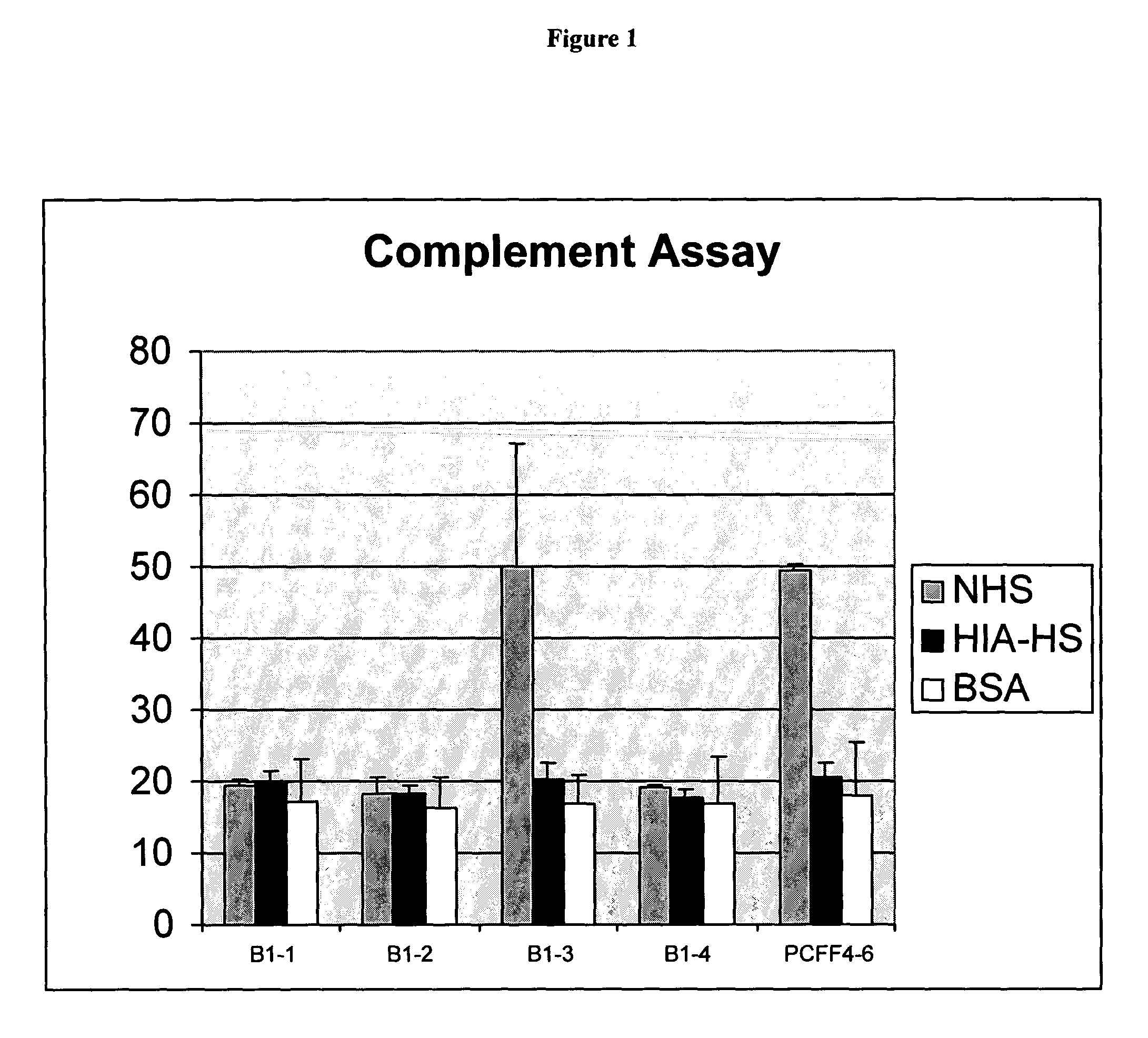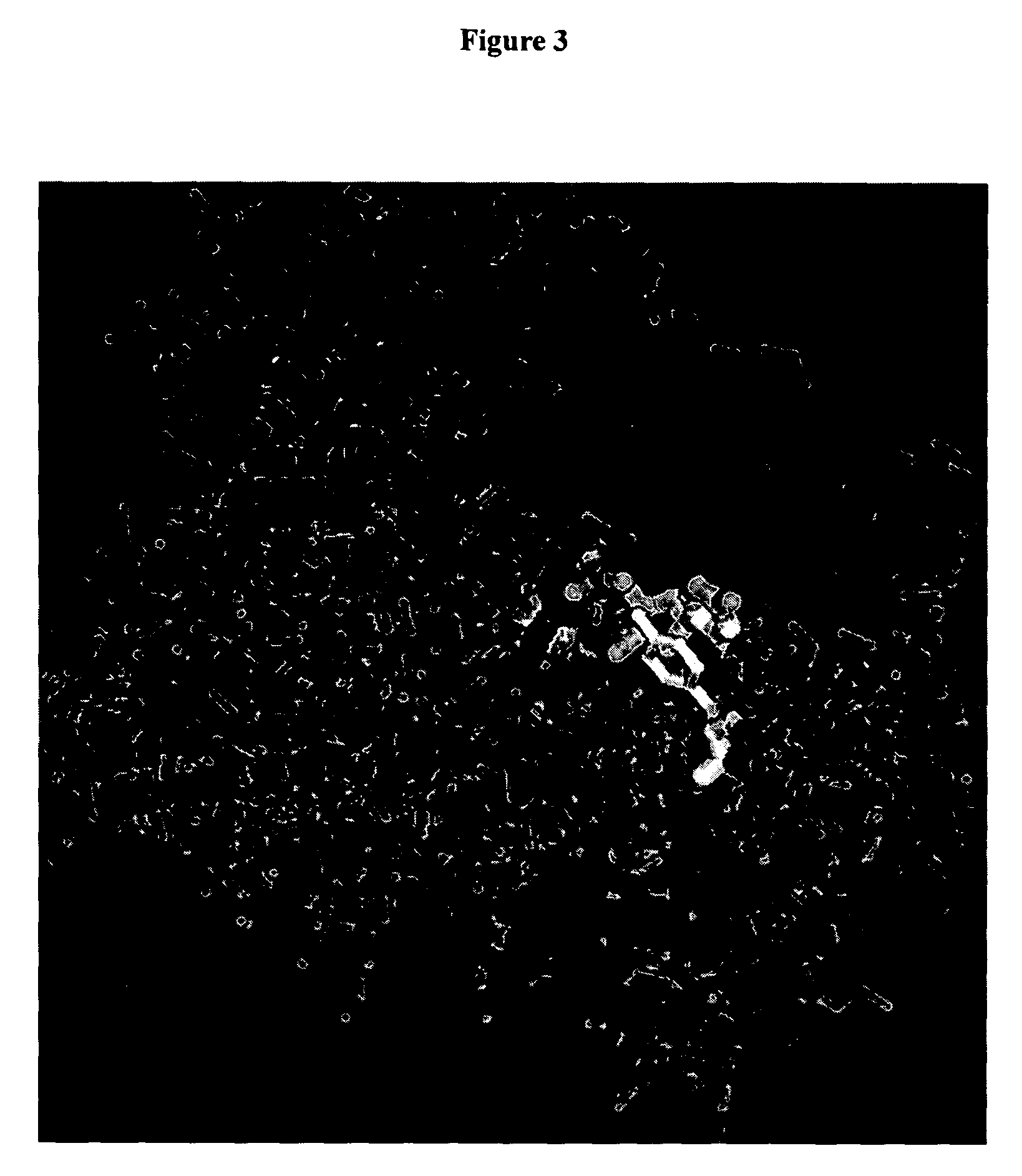Porcine animals lacking any expression of functional alpha 1, 3 galactosyltransferase
- Summary
- Abstract
- Description
- Claims
- Application Information
AI Technical Summary
Benefits of technology
Problems solved by technology
Method used
Image
Examples
example 1
Production of Porcine Cells Heterozygous for the Alpha-1,3-GT Gene
[0160]Isolation and transfection of primary porcine fetal fibroblasts. Fetal fibroblast cells (PCFF4-1 to PCFF4-10) were isolated from 10 fetuses of the same pregnancy at day 33 of gestation. After removing the head and viscera, fetuses were washed with Hanks' balanced salt solution (HBSS; Gibco-BRL, Rockville, Md.), placed in 20 ml of HBSS, and diced with small surgical scissors. The tissue was pelleted and resuspended in 50-ml tubes with 40 ml of DMEM and 100 U / ml collagenase (Gibco-BRL) per fetus. Tubes were incubated for 40 min in a shaking water bath at 37° C. The digested tissue was allowed to settle for 3-4 min and the cell-rich supernatant was transferred to a new 50-ml tube and pelleted. The cells were then resuspended in 40 ml of DMEM containing 10% fetal calf serum (FCS), 1× nonessential amino acids, 1 mM sodium pyruvate and 2 ng / ml bFGF, and seeded into 10 cm. dishes. All cells were cryopreserved upon reac...
example 2
Production of Porcine Cells Homozygous for the Alpha-1,3-GT Gene
[0167]Heterozygous alpha-1,3-GT knockout fetal fibroblasts, (657A-I11 1-6) cells, were isolated from a day-32 pregnancy as described above (See also Dai et al. Nature Biotechnology 20:451 (2002)). An ATG (start codon)-targeting alpha-1,3-GT knockout vector was constructed (pPL680), which also contained a neo gene, to knock out the second allele of the alpha-1,3-GT gene. These cells were transfected by electroporation with pPL680 and selected for the alpha1,3Gal-negative phenotype with purified C. difficile toxin A (described below).
example 3
Selection with C. difficile Toxin A for Porcine Cells Homozygous for the Alpha-1,3-GT Gene
[0168]Toxin A Cyototoxicity Curve
[0169]Porcine cells (PCFF4-6) were exposed for 1 hour or overnight to ten-fold serial dilutions of toxin A (0.00001 μg / ml to 10 μg / ml). Cells were cultured in 24 well plates and were incubated with the toxin for 1 hour or overnight at 37° C. The results of this exposure are detailed in Table 2. Clearly, a 1 hour exposure to toxin A at >1 μg / ml resulted in a cytotoxic effect on >90% of the cells. A concentration of toxin A at or slightly above 1 μg / ml therefore was chosen for selection of genetically altered cells.
[0170]
TABLE 2Toxin A toxicity at 1 hour and overnight exposure[Toxin A],μg / ml1 hour incubationOvernight incubation 0100% confluency100% confluency .00001100% confluency100% confluency .0001100% confluency100% confluency .001100% confluency100% confluency .01100% confluency 50% confluency, 50% rounded .1 90% confluencySame as 10 ug / ml 1>90% roundedSame a...
PUM
 Login to View More
Login to View More Abstract
Description
Claims
Application Information
 Login to View More
Login to View More - R&D
- Intellectual Property
- Life Sciences
- Materials
- Tech Scout
- Unparalleled Data Quality
- Higher Quality Content
- 60% Fewer Hallucinations
Browse by: Latest US Patents, China's latest patents, Technical Efficacy Thesaurus, Application Domain, Technology Topic, Popular Technical Reports.
© 2025 PatSnap. All rights reserved.Legal|Privacy policy|Modern Slavery Act Transparency Statement|Sitemap|About US| Contact US: help@patsnap.com



